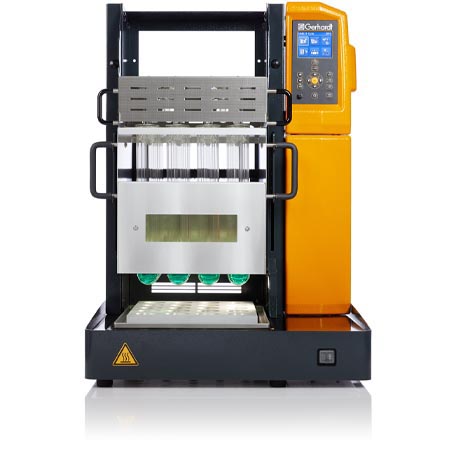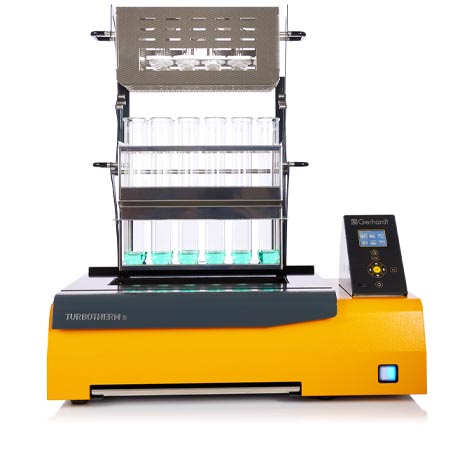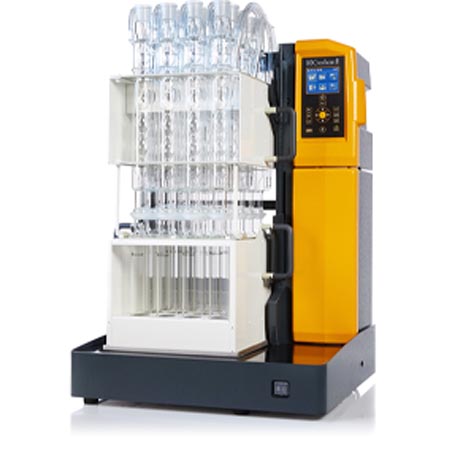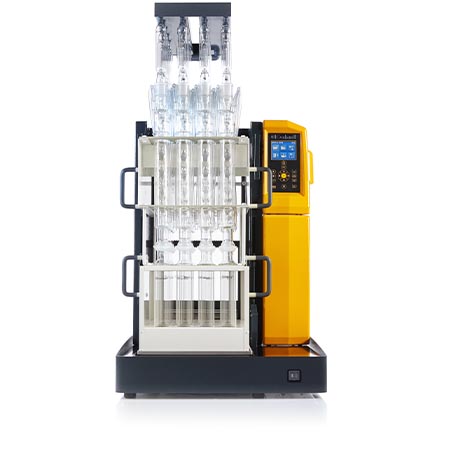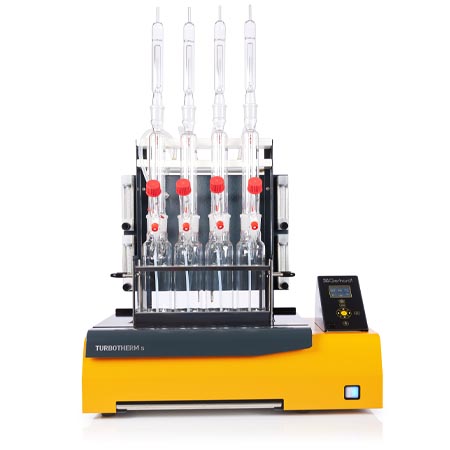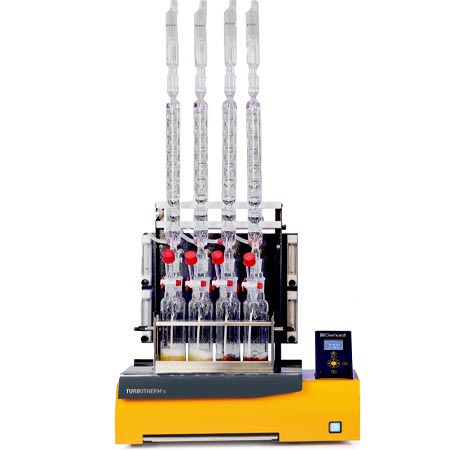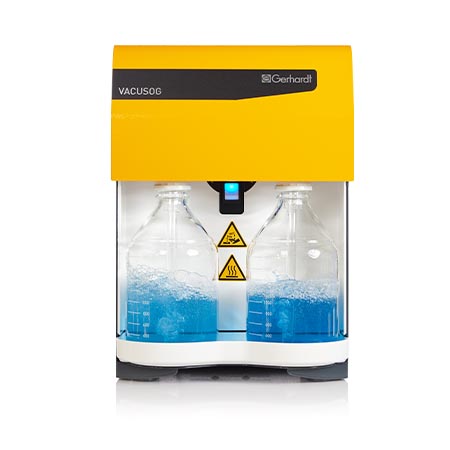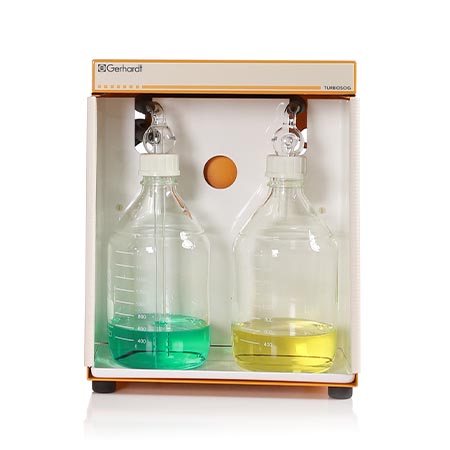The chemical digestion is a standard procedure in analytical chemistry, which is mostly used for the sample preparation of a wide variety of analytical methods. The basic principle of digestion is the oxidative destruction of the sample matrix in order to dissolve the substance to be determined for the subsequent analysis. For this purpose, the samples are usually brought to boiling point with an acid at a high temperature.
Chemical digestion is often used in sample preparation for spectrometric determination methods/elemental analyses, e.g. for ICP-OES, ICP-MS or AAS. Standard methods in environmental analysis are aqua regia digestion for the analysis of mineral and soil samples or the determination of the chemical oxygen demand (COD) in waste water. In the food industry, digestion apparatuses are used in Kjeldahl analysis to determine the nitrogen and protein content in foodstuffs or for sample preparation for the determination of cyanide, e.g. in almonds or dried fruit.
With classical digestion apparatus, suitable heating benches and laboratory flasks (e.g. Kjeldahl flasks) are used for acid digestion, which makes the application very time-consuming and requires a high level of experience of the laboratory staff. With modern digestion equipment, the process is significantly simplified, standardised and made considerably safer. The entire digestion process takes place in a closed system and runs completely automatically. Digestion blocks are particularly suitable for serial processing of samples; they can digest up to 40 samples simultaneously. A fast alternative to the digestion block is digestion by infrared radiation (infrared digestion). Due to the direct heat transfer, the samples are heated more quickly and the process is faster. This allows for more flexible sample processing.

